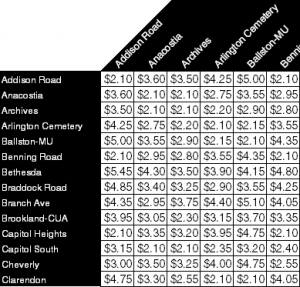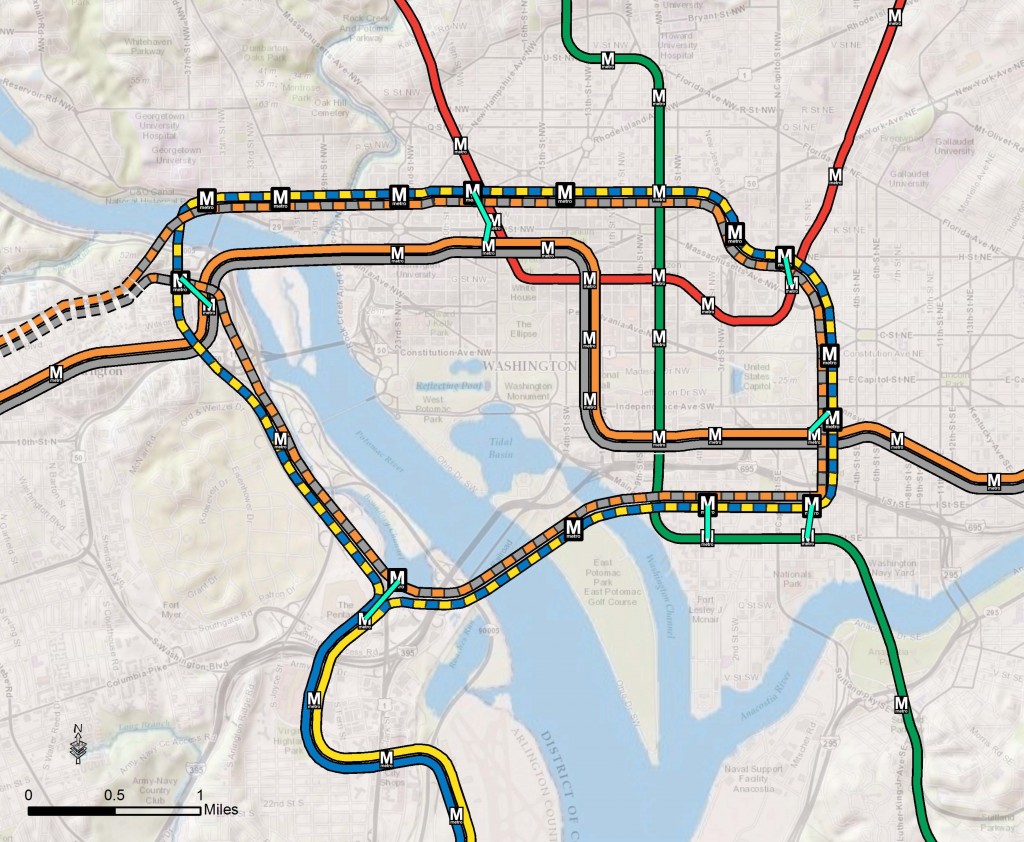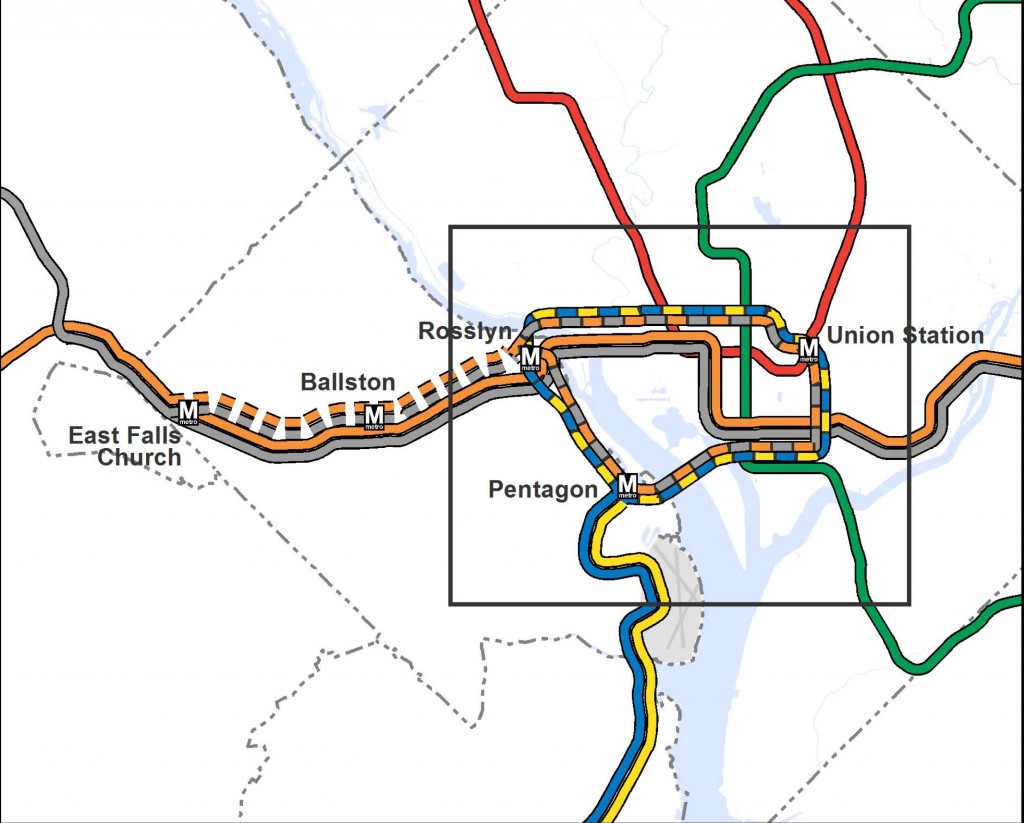Metrorail Fares Are Complicated, For Good
Metrorail’s distance-based fare structure is the most equitable.

Excerpt of Metrorail distance-based fare table.
Metrorail is one of only three heavy rail systems in the United States with distance-based fares. (BART and PATCO are the other two.) And to the best of my knowledge, it’s the only one with peak and off-peak fares. With 86 stations (soon to be 91) and two fare time-periods (it used to be three), the average rider has a large number of possible fare combinations.
The benefits of Metrorail’s existing fare structure are many-fold, but chief among them are equity, efficiency, and economics.
The fare structure is fair. Distance-based and time-of-day fares allow transit riders to pay fares in proportion to the level of service they’re using. Peak period riders pay more and have more frequent service. Short distance travel is less expensive than long-distance. With flat fares, those who take short trips subsidize those who take longer trips, and people who ride during times of reduced service subsidize those who ride during the peaks when trains are most frequent. With zone-based fares, customers taking short trips that cross a zone boundary pay a larger fare than other customers taking longer trips entirely within a zone boundary.
The fare structure is equitable. A switch from distance-based to flat-fare that was revenue neutral (not losing money) would raise a Title VI equity concern. Planning staff have done a preliminary analysis, and such a switch would have a disproportionate burden on low-income riders. A switch to flat fares that was not revenue neutral would result in higher subsidies from Metro’s funding partners
The fare structure promotes economic efficiency. People use resources more efficiently if they’re priced to reflect the value of the resource. Economists love variably priced roads like the Intercounty Connector (MD-200) and the I-495 Express Lanes, as the per-mile prices are set to keep traffic flowing. The same concept applies to Metrorail’s distance-based and peak/off-peak fares. Read more…




Recent Comments